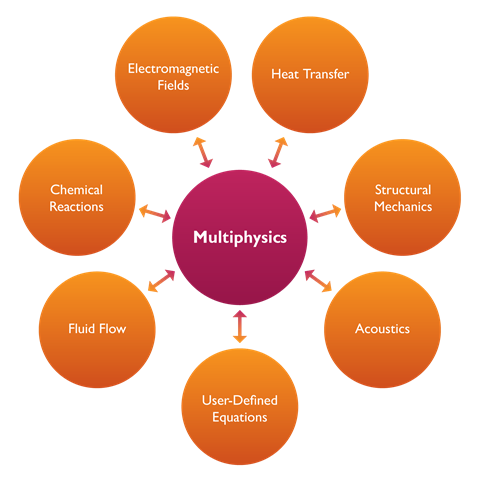
If you’re a cynic (like I am sometimes), the term “multiphysics” might irk you. There’s only one set of physical laws, after all. There’s nothing “multi” about it. So what is multiphysics?
Putting “Multiphysics” in Context
In order to understand the term, let’s take it in context. First off, “multiphysics” is a descriptor of computer simulation for physical phenomena. We’re talking using computers to understand heat, flow, EM currents and waves, sound, to name a few. It was one of the first applications of digital computers back in the 1940s and continues to be a contributing factor in the progress of scientific computing.
In those early days, computing resources were scarce. (Think vacuum tubes and room-sized machines and you get the picture.) Not only so, but the theoretical foundation for taking continuum mathematical models to digital was still being formed. So those pioneering researchers had to get a start on performing these simulations. They did so, primarily, through a divide-and-conquer approach. That is, they segregated physics into categories that could then be more easily solved. Then, computational scientists could become more specialized in their expertise. From this approach, fields like computational fluid dynamics (CFD) and finite element analysis (FEA) for mechanics were born.

Combining Any Set of Physics in One Model
Over the years, solvers improved, the theory was solidified, and hardware gained speed and capacity. Fast forward to today, and we have at our finger tips very powerful machines matched with powerful software algorithms. This begs the question: Why settle for artificially segregated categories of physics, when the real-world applications of engineers and scientists require more? The answer is: You don’t.
Enter COMSOL Multiphysics: the true leader in real-world simulations. With COMSOL Multiphysics you can combine any (yes, I mean any) set of physics together in one model. Want to model the acoustics of miniature loudspeakers that take into account thermal and structural effects? You can, with COMSOL software. How about electrical heating underground to decrease viscosity of fluids and increase well production? With COMSOL, you can do that too. The list goes on and on.

From left, models of: a loudspeaker, a Rossler attractor, and NOx reduction in a monolithic reactor.
We encourage you to think outside the lines of traditional engineering simulation. It might bring a new perspective to you and your technical organization.




Comments (0)